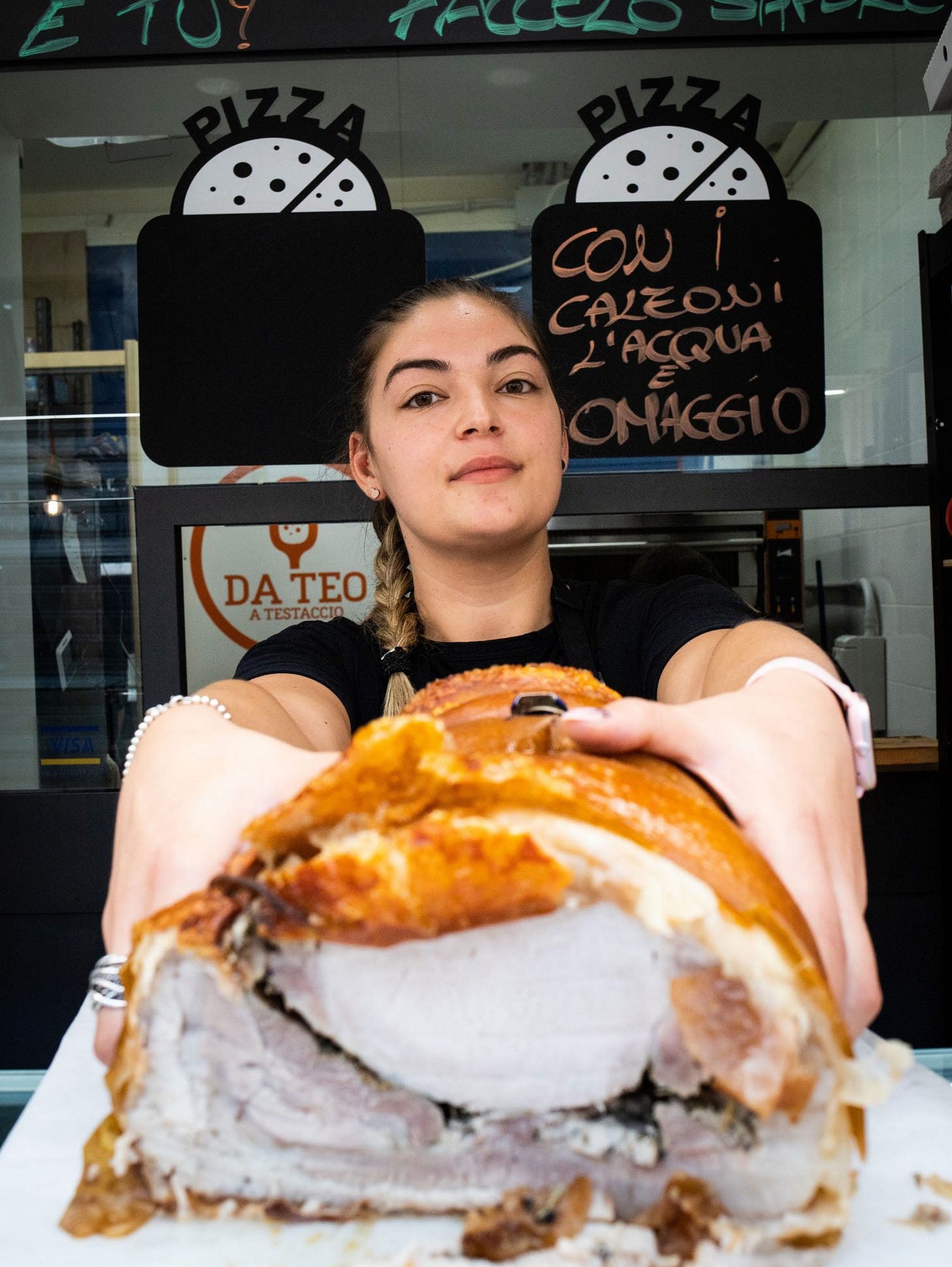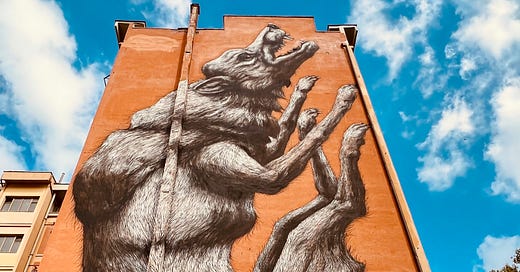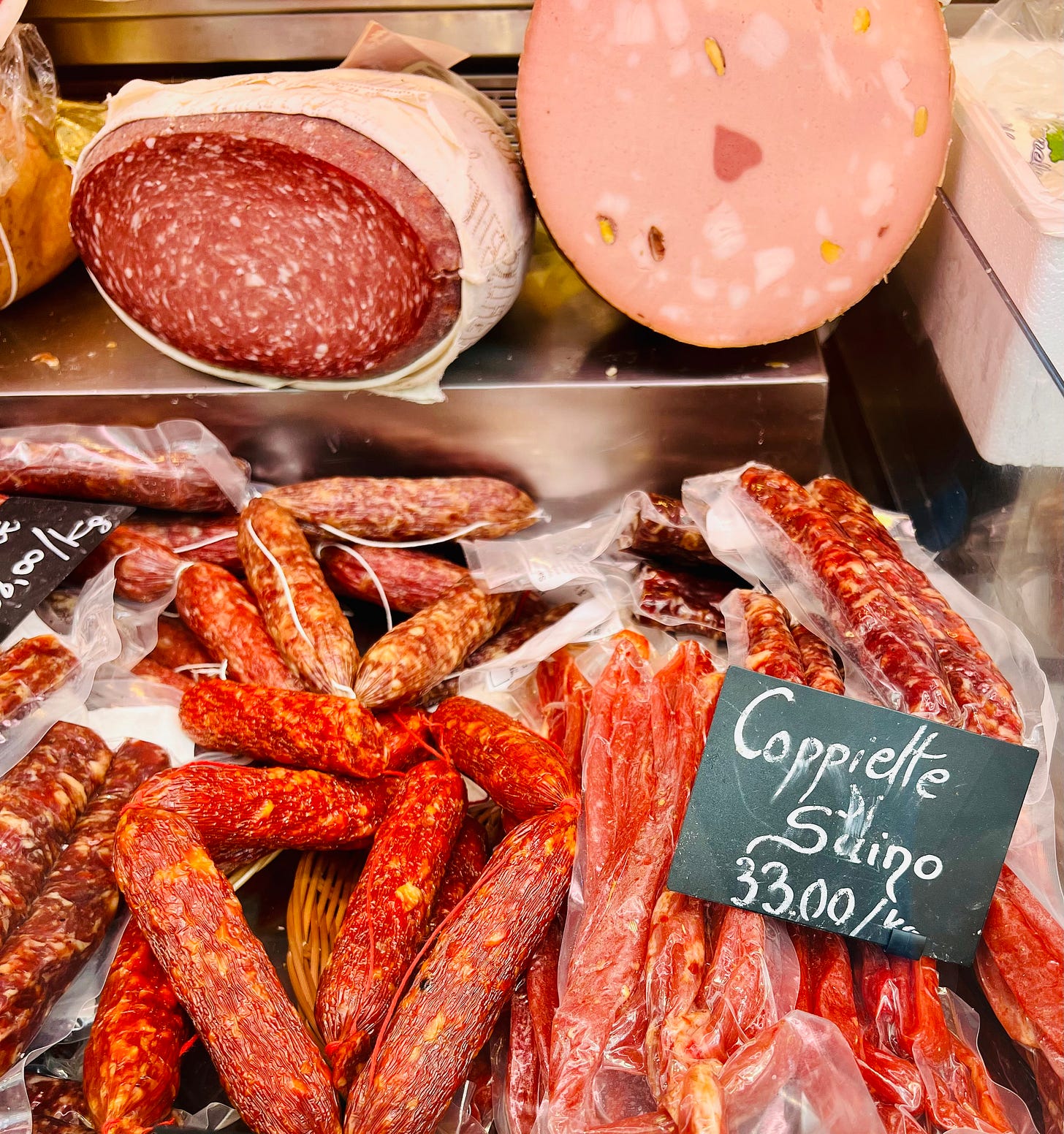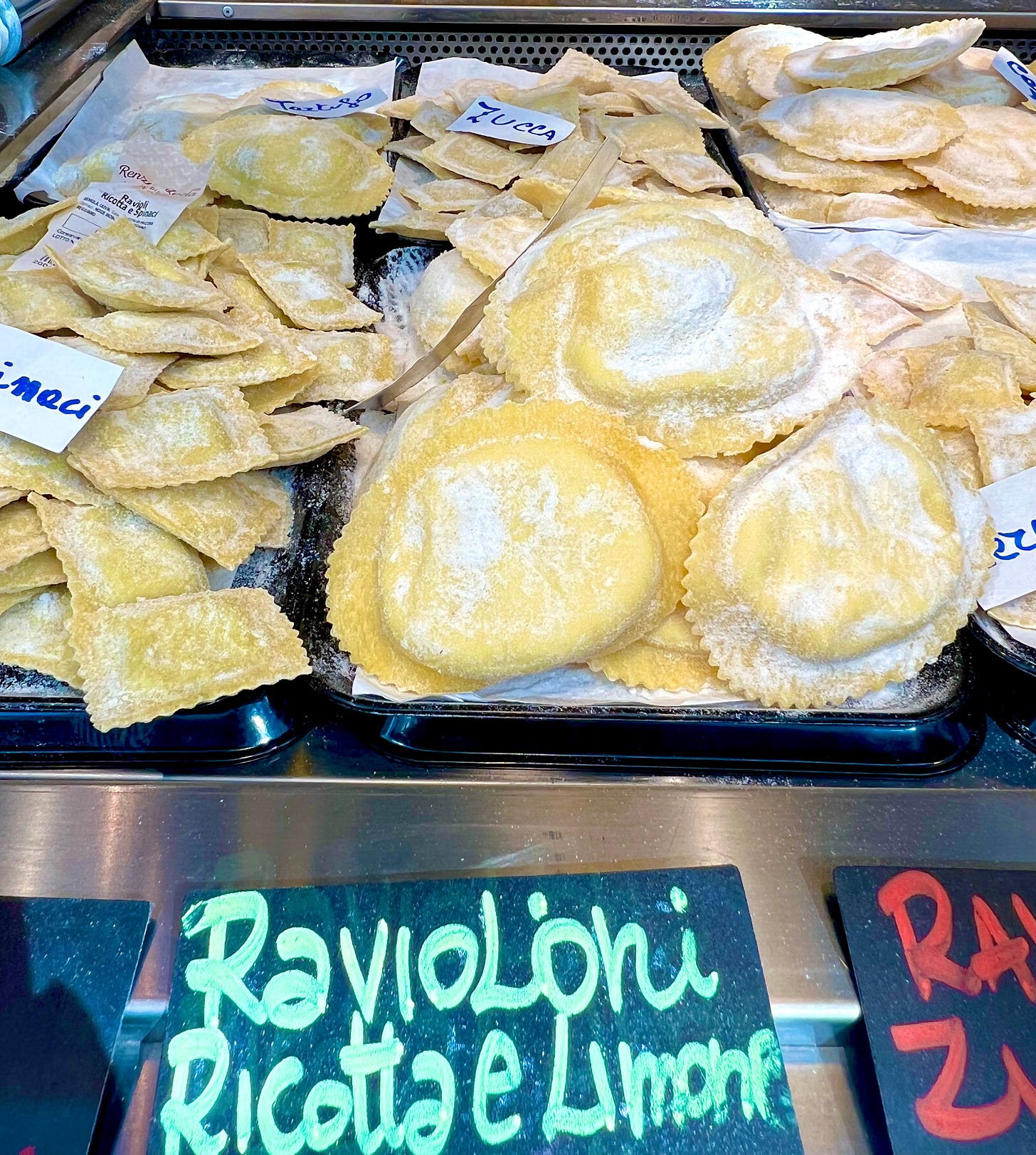For Roma Urbs Aeterna Part One: The Bacchanalia Begins (with audio!), click here.
In pursuit of the perfect plate of cacio e pepe in the eternal city, I managed to unearth (not unlike the archeologists who dug up a 5-acre-wide mountain, known as Monte Testaccio, containing the fragments of 53 million discarded ancient amphorae just a few miles away) the world renowned restaurant, Felice A Testaccio in the neighborhood affectionately referred to by Romans as “the heart of Rome.” While sadly their plate of cacio e pepe isn’t served with a colossal amphora of Falernian wine, it is “creamed” for you at the table, a commendable practice that has endured since the family opened the restaurant in 1936.
Though Testaccio (derived from the Latin word testae and the Italian word cocci, both meaning shard) may have been the largest garbage dump of the ancient world (with a volume of approximately 760,000 cubic yards), we nonetheless gave thanks to the Lares that we were drawn to set foot in this ancient stomping grounds of the paesano of Roma… the birthplace of the Roman kitchen.
With our travel companions Alan and Jackie, off we went in search of the kind of cacio e pepe that grabs you by the testae (so to speak), and keeps you coming back for more. First, we wandered aimlessly through Trastevere, bypassing the long lines of lunch-goers at the renowned Trattoria Da Enzo al 29, opting instead for a brief tour of the Basílica de Santa Cecilia en Trastevere. Though the church itself is rather humdrum, we were certainly awestruck by the marble statue of St. Cecelia in a prominent position beneath the altar, her marbled eyes supposedly gouged out by “pagans.”

As much as we tried to admire the absolute beauty of the proto-Baroque sculpture, all we could hear behind us was the tone-deaf organ musings of a nun who’s hands might well have been exchanged for Cecelia’s eyes just to keep us all from going deaf. Religiously-disinclined and not wishing to offend, we scurried from the knave like Renfield hearing his master’s call. We found refuge just outside the church before a placard marking the shooting of the movie Accattone, the first film of one of Roma’s most famous heretics, Pasolini.
We knew that cacio e pepe at Felice A Testaccio was within our grasp, but our GPS seemed to be leading us on a “wild pasta chase.” And so we wandered . . . and wandered . . . down graffiti’d alleyways, back and forth across the Tiber until we finally stumbled, by chance, upon the Mercato Testaccio that Jackie had so desperately wanted to visit. Although the Felice A Testaccio was certainly not far away from us, we were all getting “hangry” and conceded that this might be a blessing in disguise.
As soon as we set foot in the Mercato, we were immediately overtaken by the glorious aromas of simmering sauces, freshly baked pizzas being extracted from piping hot ovens, sizzling grilled meat, pungent cheeses and sumptuous mounds of porchetta being piled on to warm focaccia bread from row after row of food stands. The bustle of lunchtime customers, the majestic stalls of fresh flowers, fruit and vegetables, cheese mongers and wine shops – we had clearly died and gone to open market heaven. And there were no tourists to be found! This covered market was swarming with the popolo of Roma, the locals of Testaccio taking advantage of their lunch break.
We decided to do a full tour of the Mercato, row by row, so as not to make any impetuous decisions out of sheer hunger or overwhelming desire. There were too many options, too much to choose from. In the end, Jackie and my other half decided on the cacio e pepe they had been craving from Altro – Pasta all’uovo, an enormous stand with a plethora of freshly made egg pastas in all forms, accompanied by your choice of sauce.
Alan and I went for a meatball sandwich from Mordi e Vai, where Sergio Esposito, a hearty Italian man, was assembling sandwiches with the kind of masterful technique that certainly made you believe the sign out front advertising that these were his “grandma’s recipes.”
But none of us could resist the eye-popping roll of perfectly grilled porchetta that came from Da Teo a Testaccio. We decided we would also all split a giant porchetta sandwich. With a bottle of pinot noir, we sat ourselves down in the center of the Mercato at a little collective dining area and set about inhaling our feast.

As we started to meander out of the Mercato, I stumbled happily upon Vini Sfusi e alla Spina, a mom and pop wine shop selling wines from independent producers out of the barrel in liter bottles. Pleased as punch to get some small vineyard wines from Lazio, we purchased some cesanese red (4 euros for 1.5 liters) and some frascati (10 euros for 3 liters) to take home to the apartment. To quote their webpage from the Mercato:
Horace, one of the greatest poets of the ancient age, a master of irony and the art of living, said: “no poem written by water drinkers can like or live long”. For those who want to bring a little poetry into his life, a stop at counter n. 7 is almost mandatory, because here you can find only good Italian wines, which are the poetry of the earth and which are ideal for those who love to drink well and live well.
Sated, we went for a stroll around the backside of the Mercato and to our amazement came across one of the most stunning murals any of us had ever seen. In keeping with the Romulus and Remus mythology of Rome, painted on the side of a very tall apartment building overlooking a children’s playground (no less) was a menacing, bushy-tailed, howling wolf. Titled Jumping Wolf, it was painted by internationally-renowned Belgian street artist ROA. We were all utterly arrested by the sheer power and skill of the mural.
We all sat in the playground for a moment, absorbing the beauty of this incredible piece of avant-garde Roman street art, while Jackie took these amazing photos. Now it was time for a little aperitif, which we found a few blocks from the Mercato at the Tram Depot.
This charming little art deco coffee stand and bar, with its tree-lined terrace tables (Jackie even got an antique wrought-iron swing to sit on), was just the spot. We settled in for some hand-crafted cocktails and lounged away the rest of the afternoon listening to an amazing soundtrack of blues artists piped out onto the terrace from the Tram Depot bar. Ave atque vale Testaccio!












